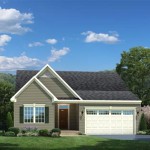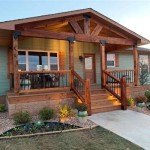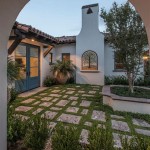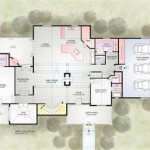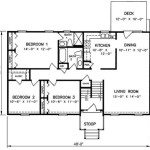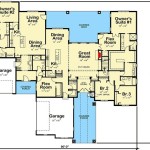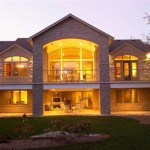Understanding Split Level House Floor Plans
Split-level house floor plans represent a unique approach to residential design, offering a variation on the traditional one-story ranch or two-story home. These designs are characterized by staggered floor levels, typically separating living areas, sleeping quarters, and utility spaces. This arrangement provides a distinct spatial separation while often maintaining a relatively compact footprint. The appeal of split-level homes stems from their ability to adapt to sloping terrains and to offer a perceived sense of increased space and privacy compared to single-story dwellings.
This architectural style gained popularity in the mid-20th century, particularly in suburban developments where affordability and efficient land use were prioritized. Its design evolved from the ranch-style house but incorporated verticality to maximize living space without requiring extensive excavation or foundation work, especially on properties with uneven ground. Today, split-level homes are undergoing a revival as homeowners appreciate their retro charm and potential for modern renovation.
Key Features of Split-Level Floor Plans
Several distinguishing characteristics define split-level house floor plans. Understanding these core elements is crucial for appreciating the design's functionality and potential limitations.
Staggered Levels: The defining feature is the presence of multiple floor levels connected by short sets of stairs. Typically, a split-level home will have at least three distinct levels. The entry level often includes a foyer, living room, dining room, and kitchen. Slightly above or below this level, one might find bedrooms and bathrooms. A lower level, often partially subterranean, typically houses a garage, laundry room, and potentially a recreation room or additional living space.
Short Staircases: Unlike traditional two-story homes, split-levels employ short runs of stairs, usually consisting of only a few steps, to connect the staggered levels. This design minimizes the physical exertion required to navigate the house, making it potentially suitable for individuals with some mobility limitations, though the presence of any stairs at all must still be factored. The shorter staircases also contribute to a feeling of openness and connection between the levels.
Adaptability to Sloping Sites: Split-level designs are particularly well-suited for building on sloping or uneven terrain. By staggering the floor levels, the house can "step" up or down the slope, minimizing the need for extensive grading and excavation. This reduces construction costs and environmental impact, while also potentially creating unique architectural features and views.
Spatial Separation: The staggered levels naturally create a separation between different living areas. This can be advantageous for families who desire distinct zones for entertaining, sleeping, and recreation. The separation can reduce noise transmission and create a greater sense of privacy for occupants in different parts of the house.
Advantages of Split-Level Home Design
Beyond their distinctive aesthetics, split-level homes offer several practical advantages that contribute to their continued appeal.
Efficient Use of Space: The staggered layout allows for a relatively large amount of living space to be incorporated into a compact footprint. This is particularly beneficial for smaller lots or in areas where land is expensive. The vertical expansion, without the full commitment of a two-story structure, provides additional square footage while maintaining a manageable exterior profile.
Enhanced Privacy: The separation of levels enhances privacy among family members or housemates. Bedrooms are often located on a separate level from the main living areas, minimizing noise disturbance and creating a more peaceful sleeping environment. The lower level can serve as a dedicated recreation or entertainment space, further isolating noise and activity from the rest of the house.
Potential for Natural Light: Split-level designs can be strategically oriented to maximize natural light penetration. The staggered levels create opportunities for windows on multiple sides of the house, allowing sunlight to reach different areas at different times of the day. This can reduce reliance on artificial lighting and create a brighter, more inviting interior.
Affordable Construction: Compared to traditional two-story homes, split-level construction can sometimes be more affordable, especially on challenging sites. The reduced need for extensive excavation and foundation work can translate into cost savings. Additionally, the simpler roofline and less complex structural design can contribute to lower construction expenses.
Common Split-Level Floor Plan Variations
While the fundamental principle of staggered levels remains consistent, split-level homes come in various configurations, each with its own unique characteristics and advantages.
Side Split: In a side split design, the house is divided horizontally, with one side slightly higher than the other. Typically, the main entrance is located on the lower level, with a short staircase leading up to the living areas and another staircase leading down to the basement or garage. This configuration often provides a clear separation between public and private spaces.
Back Split: Similar to the side split, the back split divides the house horizontally, but the staggered section is located towards the rear of the property. This configuration often places the bedrooms at the back of the house, providing a quieter and more private environment. The front portion of the house typically contains the living areas and kitchen.
Front Split: In a front split design, the main entrance is located on the upper level, with a short staircase leading down to the living areas and another staircase leading up to the bedrooms. This configuration is often used when the property slopes upward from the street, allowing for a walk-out basement at the rear of the house.
Four-Level Split: This variation expands on the basic split-level concept by incorporating a fourth level, typically located between the main living area and the bedrooms. This level can be used for a variety of purposes, such as a home office, a recreation room, or an additional bedroom. Four-level splits offer even greater spatial separation and flexibility.
Potential Challenges and Considerations
While split-level homes offer several advantages, it's important to be aware of potential challenges and considerations before purchasing or building one.
Limited Accessibility: The presence of multiple staircases can pose challenges for individuals with mobility limitations. While the short runs of stairs may be easier to navigate than a full flight of stairs in a two-story home, they can still be an obstacle for those who use wheelchairs or have difficulty walking. Retrofitting a split-level home with an elevator or ramp can be difficult and expensive.
Potential for Uneven Heating and Cooling: The staggered levels can create challenges for maintaining consistent temperatures throughout the house. Heat tends to rise, so the upper levels may be warmer than the lower levels during the winter months. Conversely, the lower levels may be cooler than the upper levels during the summer months. Careful planning of the heating and cooling system is essential to ensure comfortable living conditions.
Dated Aesthetics: Some split-level homes may have dated aesthetics, particularly if they have not been updated in recent years. The original design may feature dark paneling, low ceilings, and small windows, which can make the interior feel cramped and outdated. However, many split-level homes can be successfully renovated to create a more modern and open feel.
Resale Value: The resale value of split-level homes can vary depending on the location, condition, and updates. In some markets, split-levels may be less desirable than traditional one-story or two-story homes. However, in other markets, they may be highly sought after, particularly by buyers who appreciate their unique character and potential for customization. Conducting thorough market research is crucial before investing in a split-level home.
Ultimately, split-level house floor plans present a viable option for homeowners seeking a balance between space efficiency, privacy, and affordability. Careful consideration of the design's features, advantages, and potential challenges is essential for making an informed decision.
Split Level Homes Designs G J Gardner

Split Level House Plans And Foyer Floor

4 Bedroom Split Level House Plan 2136 Sq Ft 2 Bathroom

Familyhomeplans Com Plan Number 45253 Order Code 01web Split Level House Plans Modular Home Floor

Split Level House Plans And Foyer Floor

Contemporary Style House Plan 4 Beds 2 5 Baths 2495 Sq Ft 17 2798 Split Level Plans Floor

Split Level Homes 50 Floor Plan Examples Archdaily

Split Level Homes 50 Floor Plan Examples Archdaily

Split Level House Plan With Drive Under Garage 42591db Architectural Designs Plans

Split Level House Plans Home Design 3266

